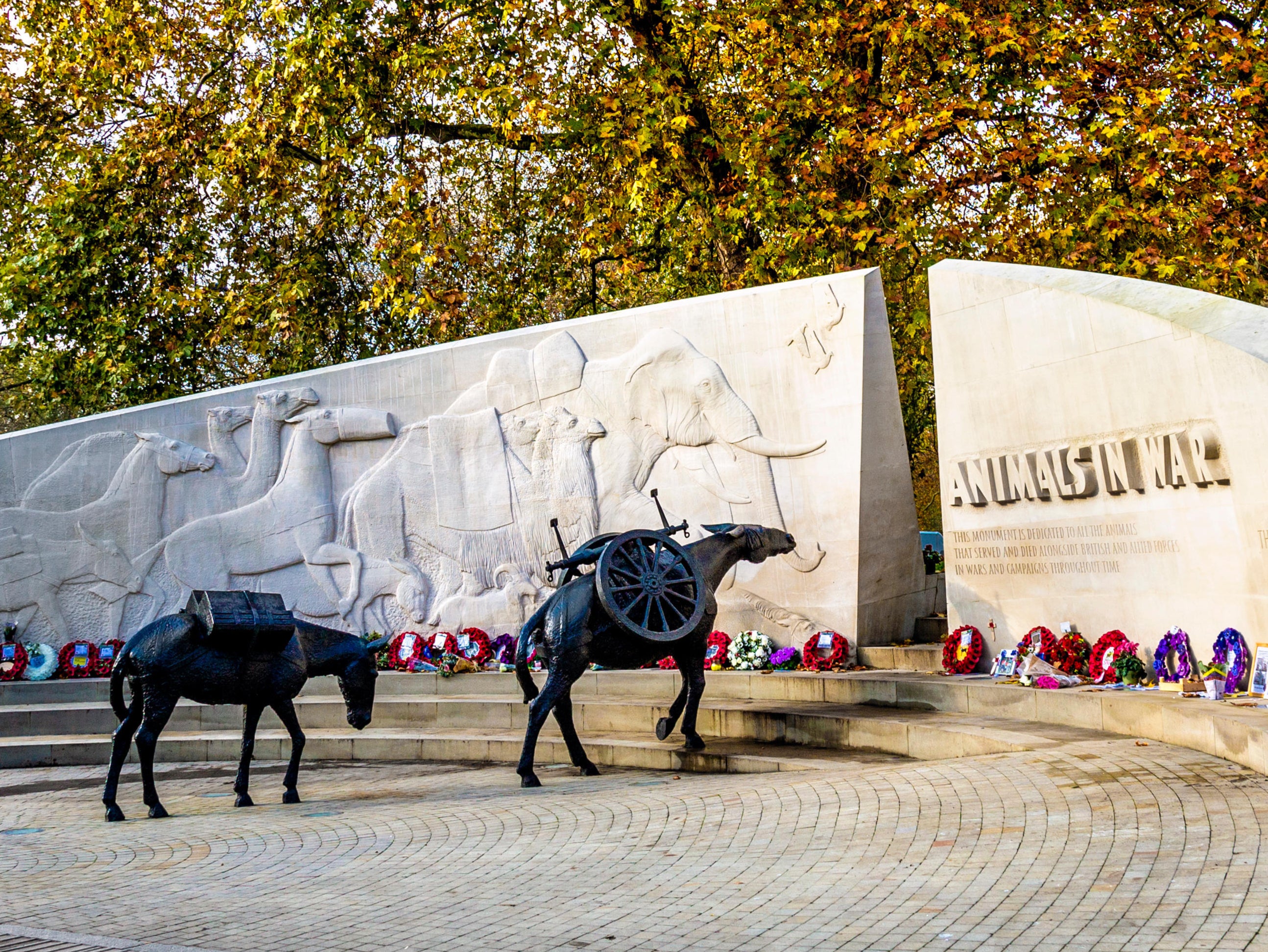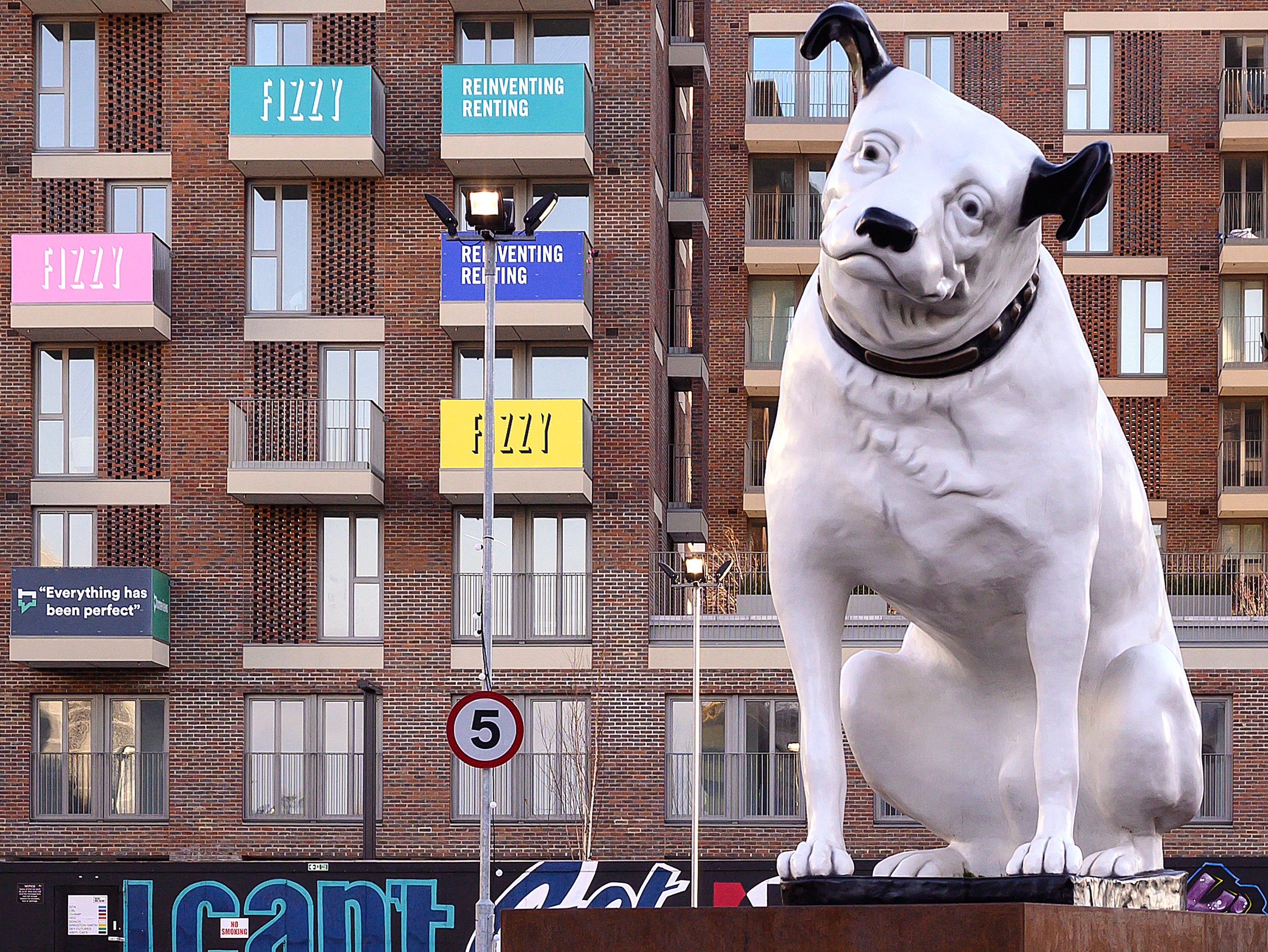Public urged to help document UK’s animal statues and sculptures
Crowdsourcing project will ‘chart the country’s four-legged monument heritage’

On the edge of Hyde Park stands an arresting sight – two donkeys, burdened by the detritus of war, thin and exhausted, plod towards a stark stone wall. On the far side stand a bronze horse, head bowed, as if also worn out.
The heartrending sculptures symbolise the millions of animals used and killed in the wars and conflicts of the 20th century, including the 8 million horses, donkeys and mules that died in the First World War.
It took until 2004 to create the monument, but it will be a lasting reminder.
At the other end of the scale, a bronze statue was unveiled this year in Islington, north London, of Bob the Street Cat – the animal whose story became a bestseller after author James Bowen found him injured and abandoned.
The animal became an emotional lifeline for the Big Issue seller, motivating him to continue to work.
Dotted around the UK are countless statues of soldiers with their horses, created to memorialise wars, from the Duke of Wellington to a First World War bronze near Romsey in Hampshire.

In 2018 a memorial to all horses killed in the First World War was unveiled near Ascot racecourse.
One of the most famous animal statues is that of the Greyfriars Bobby in Edinburgh, a life-size bronze statue of a 19th-century Skye terrier reputed to have guarded his master’s grave for more than a decade.
But there is no UK archive that documents all the country’s public monuments and sculptures featuring animals.
So now the Public Statues and Sculpture Association is asking the public to notice pet- and animal-themed public sculptures and art installations and submit information about them to be recorded for a new project, described as “charting the country’s four-legged monument heritage”.
The crowd-sourcing initiative will collate data for a future study on the public artworks of animals.

The association says many installations predate modern planning rules or were independent charitable or private endeavours, so have not been formally recorded in one place.
Organisers, including pet-rehoming website Pets4Homes, are asking people to provide information such as:
- What does the statue represent? Does the statue have a title? If so, what is it?
- Who made it? Is there a signature?
- Is there a date on it which can tell us when it was made?
- Is there any other information written on the statue?
- Can you tell what material it is made of? For example, bronze, marble, cement.
- What is the statue’s exact location?
They hope dog-walkers, runners and animal lovers alike will all provide information, and they are being asked to send it to Pets4Homes.
It’s not the first time such a project has been attempted. In 2019 Newcastle University researchers launched “Finding Fido”, an online archive of headstones, plaques, statues and other memorials dedicated to animals to better understand how the relationship between humans and animals has changed over time.






Join our commenting forum
Join thought-provoking conversations, follow other Independent readers and see their replies
Comments